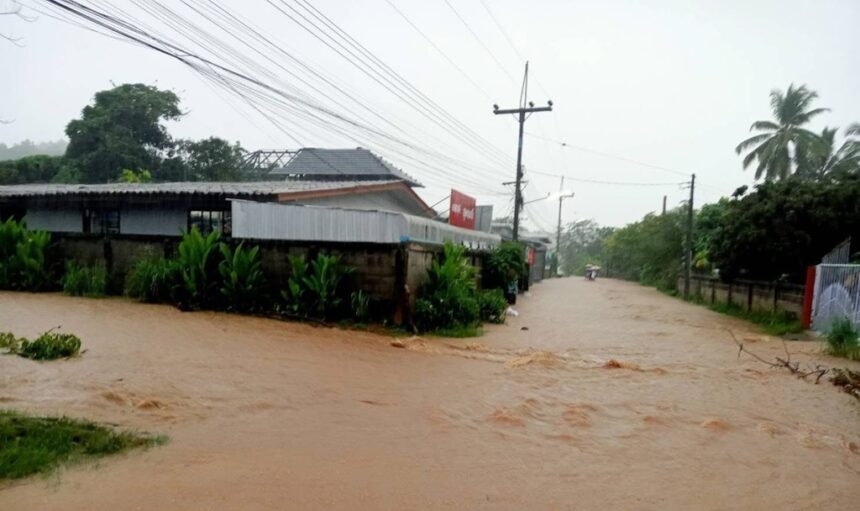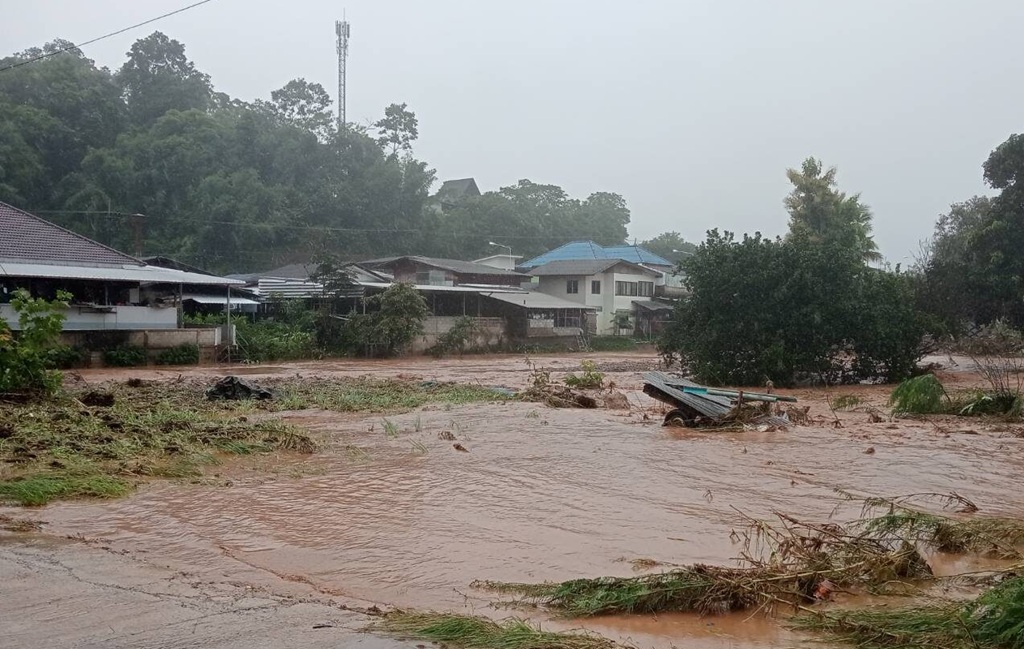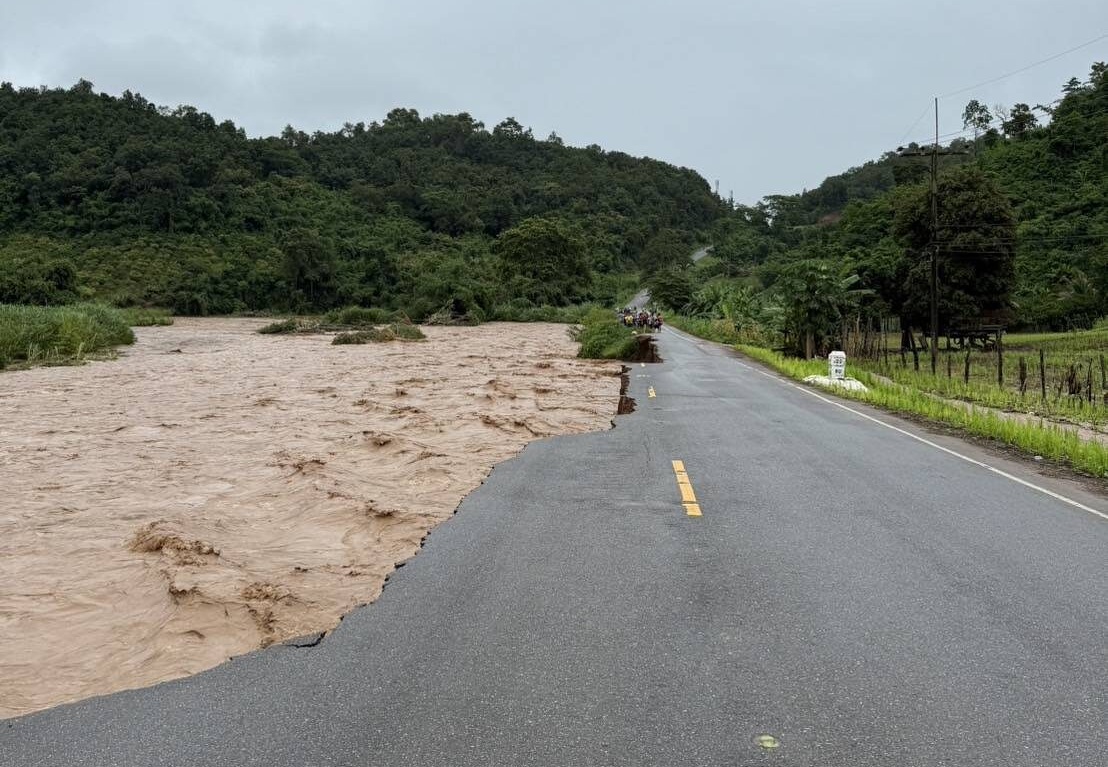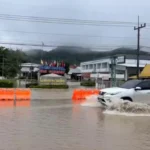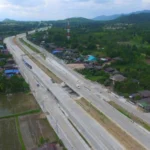CHIANG RAI – Storm Wipha has swept through Chiang Rai Province with heavy rainfall affecting 18 districts, leaving hillsides unable to absorb the water. This has led to flash floods that surged into local streams and rivers.
In Thoeng district, water from the Nong River overflowed, flooding homes and farmland in more than ten villages in both Tab Tao and Ngaw subdistricts. Several sections of the road up to Phu Chi Fa were underwater, and some areas experienced landslides, blocking access.
Municipal areas in Thoeng town also experienced flooding, especially on the main Thoeng–Chiang Rai road near the district police station. Water levels reached 20 to 30 centimetres, making it difficult for small vehicles to pass.
Many local homes and government buildings, including Thoeng Hospital, were affected. The hospital announced a temporary closure for regular services but remains open for emergencies.
Anake Pantayam, the Thoeng district chief, said he visited affected areas with local officials to assess the situation and assist residents. Floodwater from the mountains and overflowing reservoirs caused the problems.
Authorities warned people to protect valuables and arranged for the evacuation of vulnerable groups such as patients, children and the elderly to safe areas.
In the Wiang Kaen district, floodwaters entered the district centre, especially near Lai Ngaw Temple, disrupting transport. Strong currents damaged the bridge leading to Wat Tham Phalae in Por subdistrict. District chief Supoj Langkawiranan coordinated with local agencies to help residents.
Phaya Mengrai district has also been badly hit. District chief Chusawat Sawatdee reported widespread flooding across several subdistricts, affecting homes and farmland.
Emergency teams are working in the area, warning people in high-risk areas to move their belongings and evacuate elderly residents, bedridden patients and those with disabilities.
In Mae Pao, all 20 villages saw flash floods damage houses and farmland. In Tad Khwan, water levels reached 20 to 50 centimetres, while in Mae Tam, levels rose as high as 60 centimetres. With more rain expected, officials warned residents of possible rising waters and issued urgent evacuation notices for at-risk areas.
In Mai Ya, water depths ranged from 30 to 50 centimetres and continued to rise. In the Mengrai subdistrict, villages 3, 4, 5, 6, 7, 8, 9, 11, 12, 13 and 14 faced flooding from 20 to 30 centimetres, with water still coming in.
In Nang Lae, on the outskirts of Chiang Rai city, flash floods flowed down from Doi Pong Phrabat, flooding low-lying areas and village homes. Water spilled onto Phahonyothin Road (westbound), making travel difficult.
While small cars could still get through, drivers had to take extra care. Several villages in Doi Lan, Mueang district, including villages 6, 7, 9, 14 and 15, were also flooded. Local leaders and municipal staff are in the area helping residents and checking damage.
Officials across Chiang Rai continue to assess the situation, provide help and warn residents in flood-prone areas to stay alert as heavy rain is expected to continue.




